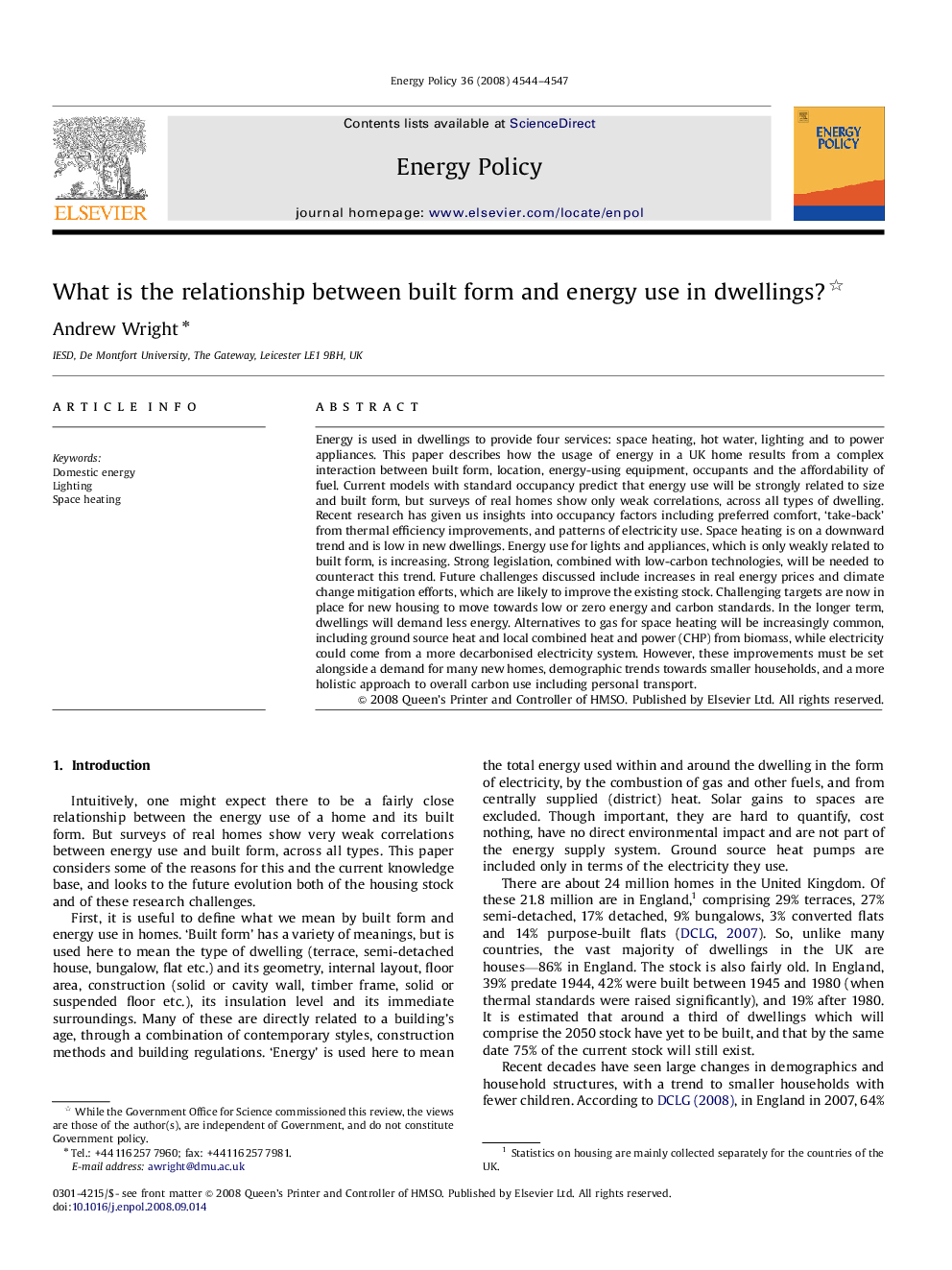| Article ID | Journal | Published Year | Pages | File Type |
|---|---|---|---|---|
| 993902 | Energy Policy | 2008 | 4 Pages |
Energy is used in dwellings to provide four services: space heating, hot water, lighting and to power appliances. This paper describes how the usage of energy in a UK home results from a complex interaction between built form, location, energy-using equipment, occupants and the affordability of fuel. Current models with standard occupancy predict that energy use will be strongly related to size and built form, but surveys of real homes show only weak correlations, across all types of dwelling. Recent research has given us insights into occupancy factors including preferred comfort, ‘take-back’ from thermal efficiency improvements, and patterns of electricity use. Space heating is on a downward trend and is low in new dwellings. Energy use for lights and appliances, which is only weakly related to built form, is increasing. Strong legislation, combined with low-carbon technologies, will be needed to counteract this trend. Future challenges discussed include increases in real energy prices and climate change mitigation efforts, which are likely to improve the existing stock. Challenging targets are now in place for new housing to move towards low or zero energy and carbon standards. In the longer term, dwellings will demand less energy. Alternatives to gas for space heating will be increasingly common, including ground source heat and local combined heat and power (CHP) from biomass, while electricity could come from a more decarbonised electricity system. However, these improvements must be set alongside a demand for many new homes, demographic trends towards smaller households, and a more holistic approach to overall carbon use including personal transport.
